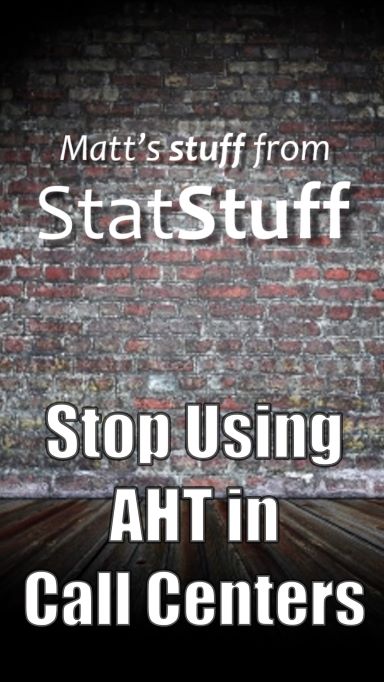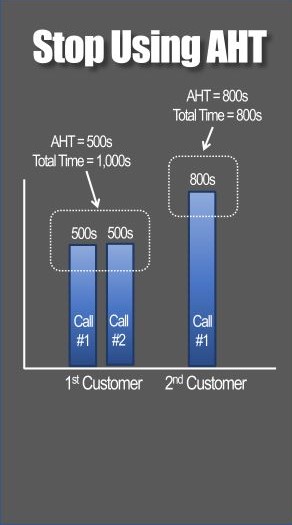Video Transcript
If you operate a call center, you need to stop using average handle time or AHT - it's one of the worst and yet most frequently used measurements in call centers. You see, most call centers want to reduce their AHT because it's a general indicator of how productive agents are on the phone - lower AHT means agents are handling more calls for the same cost (therefore reducing the overall operational cost of the call center). However, AHT is so often misunderstood and misused that I believe it causes more harm than good.
For example, let's say you have two customers calling. The 1st customer calls two times for two separate issues and spends 500 seconds on each call. The 2nd customer calls only one time with the same two separate issues but spends 800 seconds on the one call. From an AHT perspective, the 1st customer situation is better because it yields AHT of 500 seconds compared to 800 seconds for the 2nd customer. But is that 1st customer situation really better? Not at all!
From a customer perspective, they're spending 1000 seconds across two calls - that can be very frustrating for a customer who is spending more time on their issues and having to call back a 2nd time to go through authentication and re-explain their situation to a different agent. It's also worse from an operational perspective because the call center is dedicating 1000 total seconds vs. 800 seconds for the 2nd customer scenario.
There are two better ways to approach this. One is to use a median handle time (which is the 50th percentile instead of the average or mean) and if possible it's better if that can be measured down to the actual call reason (since one call can very often have multiple reasons per call). The other option is to measure total handle time or THT which I developed to assess the total amount of time spent either by a customer or across the call center. THT gives you a better customer perspective plus it can help you operationally by not chasing phantom issues.
For example, suppose you improved a problem for your customers so that they don't have to call in about it. Eliminating those calls could make your AHT go higher making you think something is wrong; but if you were instead measuring the total handle time or THT, you'd see the overall call time is getting better so you don't have to waste your time fixing something that ain't broke.



